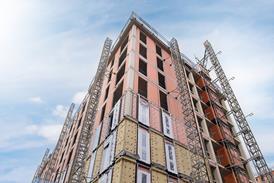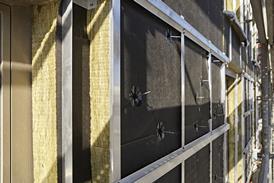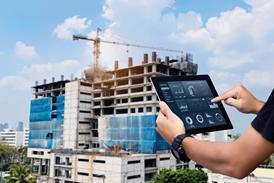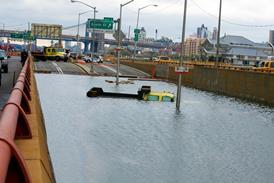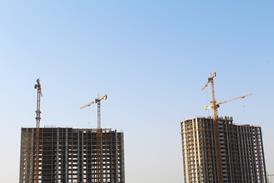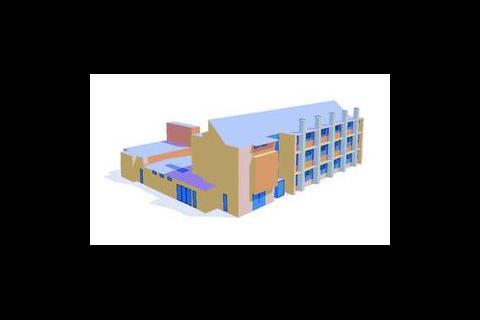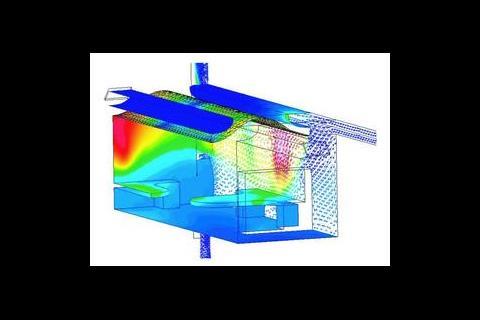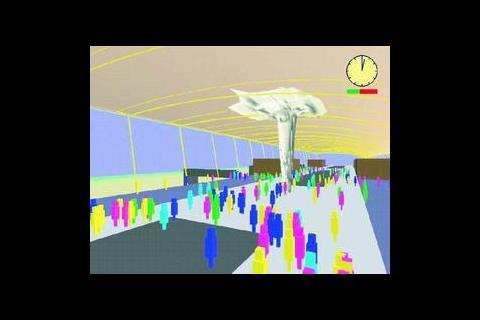Its use, particularly in the form of computer-based simulation, is becoming increasingly widespread and provides both designers and clients with the means to evaluate and optimise conceptual designs.
Physical modelling in the form of full-size or scale mock-ups was originally the only way to predict how a design would perform in real-life and its use today remains essential. However the advent of the energy crisis in the late 70s and early 80s and the subsequent development of complex mathematical modelling has led to computer simulation techniques becoming increasingly accessible.
Numerous commercial and public domain packages are available. Energy assessment is a priority for most projects, while other areas include lighting, ventilation and noise, although the complexity of the latter means it is not in widespread use – yet. Computational fluid dynamics (cfd) is a common tool within the field of computer modelling and may be used, for example, to assess environmental thermal comfort, air quality and smoke movement in the context of the built environment. CFD can predict values for air velocity, temperature, pressure, turbulence as well as the composition of the entire flow domain.
The right time for modelling
There are a number of situations when modelling of a project becomes essential. It is commonly used when the project needs fall outside of the normal design process, where there is a need to challenge traditional design standards or where there are financial incentives or penalties for meeting a building's performance targets.
"My one recommendation is when you are dealing with an innovative, sustainable design you need to look at modelling it," says Professor Farshad Alamdari commercial director of BRE Environment and head of its physical and computational modelling service.
Whether computer or physical modelling is employed, or both, the most critical aspect is understanding the needs of the client and project. This in turn requires a knowledge of the pros and cons of different modelling approaches to decide on a methodology that suits engineers' and clients' needs.
As Alamdari points out "This may sound obvious, but there are many situations that I have experienced in which this simple starting point has been ignored and the modeller has jumped into modelling without understanding its objectives".
Common problems include inappropriateness of the selected models and modelling method, or inadequate modelling assumptions, planning, approach and organisation. "These have led to many surprises not least misleading conclusions and a waste of client's time and money," adds Alamdari.
There is of course no substitute for experience and asking the right questions is fundamental in achieving the maximum outcome from modelling. Redefining these answers into modelling objectives and tasks requires detailed knowledge of the capability of the model or models to be used.
The recognition of the level of detail that will affect accuracy is a key concept. In practice the aim should be to avoid over simplification as well as over complex details, both of which can which can lead to significant errors.
There is often conflict between the area under consideration and the need to minimise the size of the model to manageable levels. "Clients and engineers want to see minute details within a model, which have no impact on the solution under consideration, wasting modelling time and computing run time," says John Hurworth, senior engineer at TPS Consult.
A lot of work has gone into making modelling packages user friendly allowing building services engineers to simulate complex problems after one or two days training. However the critical area of interpreting the predicted results and relating these to the assumptions made still calls for in-depth knowledge. Especially as the results of numerical modelling can be very convincing and sometimes deter users from questioning their appropriateness and accuracy. "If a solution from a model does not look right then it must be challenged until the results can be accepted," says Hurworth. "Operators can add monitoring functions to a model that provide additional information to confirm the model is performing as expected and help validate results."
Clients never fail to be impressed by the application of cfd to their projects and it adds credibility to the consultants involved
What should a client expect?
The demand for modelling is becoming more widespread but there are cost implications to consider. "There is still a reluctance to fund the modelling exercises as a separate entity from the design fee," says Hurworth. "They like what they see but are not always prepared to pay for it."
Clients expect to get accurate and reliable predictions. "The way in which the modelling results can be graphically displayed enables the educated and uneducated to discuss technical issues on a more equal plane which helps with communication," Hurworth adds.
Providing a lot of unnecessary technical details and unfamiliar jargon should be avoided as it will not help in the decision making process. "Although modellers need to record and report on the broad basis of the employed models and modelling assumptions, these need to be kept on an optimum level, keeping the information relevant to the problem at hand and client needs," comments Alamdari.
Hurworth perceives more scepticism from engineers than clients in the usefulness of modelling. "Engineers will not move away from tried and tested methods and embrace what cfd can do to help them. Acknowledging cfd's limitations can deter engineers from using the modelling exercise" he comments.
Clients also need to be made aware of the allocation of appropriate modelling time during the project process and for this time to be reviewed and extended to suit the results obtained which are not always expected. Modelling may take the design process down a new avenue of development which will require suitable reallocation of time and remuneration.
The future
The future of modelling doesn't rely solely on hardware and software developments. A shift in culture with greater emphasis on design team integration will help maximise the return from a modelling exercise. The custom of having architects, engineers, modellers and clients sit down together on day one of a project could theoretically start happening tomorrow and provide a leapfrog improvement in productivity.
Integration at the software level is also likely to be the basis of future advances. "The introduction of an integrated system design concept is currently underdeveloped," says Alamdari "Although some organisations use this or similar terminology as a marketing phrase for their semi-linked models, this is by no means any closer to the full integration that is needed," he adds.
The reason? The problem is currently too complex and requires much faster computer technology, more intelligent data management and exchange systems between tools, and access to faster Internet data transfer capability between design team and modellers. Cost is obviously a major barrier to development but Alamdari sees the potential for an organisation such as BRE offering a full design evaluation service employing such an integrated system which clients could accessing over the Internet.
Current software libraries containing common components for constructing models are also likely to become more comprehensive and make the simulation more life-like to a particular supplier's information.
Despite the advance in computer simulation in the last 20-30 years, physical modelling will continue to play a major role. "I don't think that computer modelling will ever be sufficiently good enough to cope with all the aspects that physical modelling does," says Alamdari. This is perhaps reflected in the fact that there are currently no numerical models sufficiently developed that can predict the vortices generated around high-rise buildings in the way that physical modelling in a wind tunnel can. Similarly computer modelling cannot fully recreate room mock-ups. It is not possible, for example, to define the actual performance of a chilled ceiling or fan coil system which will vary from manufacturer to manufacturer and which may have an effect on the overall room conditions, occupants' satisfaction and productivity.
Room mock-ups also allow subjective evaluation of an environment. In the very distant future virtual reality may provide similar opportunities to experience both the visual and environmental conditions.
Source
Building Sustainable Design










